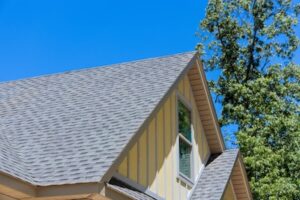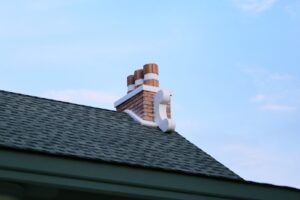The Ultimate Home Guide to Understanding and Preventing Roof Leaks
A house’s roof serves as its first line of defense, tirelessly shielding us from the onslaught of wind, rain, sun, and snow. However, it’s not invincible. With time, relentless exposure to the elements can lead to deterioration, and a symptom of this wear and tear that most homeowners dread is roof leaks. Whether you’re a homeowner or a professional in the construction industry, this ultimate guide to understanding and preventing roof leaks will equip you with the knowledge you need to address roof leaks effectively.

Understanding Roof Leaks
Roof leaks are not just a minor annoyance; they signal a potential underlying problem that can escalate into significant damage if not addressed promptly. The water seeping through your roof may cause mold growth, structural damage to your house, and ruin your insulation, leading to higher energy bills. But before we delve into prevention methods, it’s crucial to understand the common causes of roof leaks.
Causes of Roof Leaks
Roof leaks can occur due to various reasons, but some culprits are more frequent than others.
- Age: As roofs get older, the materials used can shrink, become brittle, and lose their waterproofing capabilities. The sun’s harsh UV rays can cause the roofing material to degrade over time.
- Flashing Cracks: Flashing, typically made of metal, is used to create a water-resistant barrier in certain areas of your roof. Over time, this can crack or corrode, leading to leaks.
- Broken or Missing Shingles: High winds, heavy rain, or even an animal can cause shingles to break or go missing, creating a direct path for water to your home.
- Clogged Gutters: If your gutters are filled with leaves, twigs, or other debris, the water can’t flow off your roof, leading to it backing up under the roof structure.
- Skylight or Chimney Leaks: Incorrectly installed or deteriorated skylights and chimneys can also cause leaks.
Preventing Roof Leaks
Prevention is always better than cure. Regular maintenance and inspections can help you identify potential issues before they turn into significant problems. Here’s how you can prevent roof leaks:
- Regular Inspections: A bi-annual inspection, particularly after harsh weather seasons, can help detect issues early. Check for cracked or missing shingles, damaged flashing, and signs of wear and tear.
- Clean Your Gutters: Ensure your gutters are clean and free from debris to facilitate proper water flow. If water can’t easily drain, it can seep into the roof structure, causing a leak.
- Install Gutter Guards: Gutter guards are useful in preventing the accumulation of debris, making gutter maintenance easier and reducing the likelihood of clogs.
- Inspect and Repair Flashing: Regularly inspect the flashing around vents, skylights, and chimneys. Replace them if they’re cracked or missing.
- Roofing Material: Consider using advanced roofing materials designed to be more durable and leak-resistant.
Implementing an advanced roof leak prevention plan can help in reducing the risk of leaks. These plans could involve regular maintenance, the use of high-quality materials, and prompt repair of any identified issues.
Professional Help and When to Seek It
While some preventive measures can be DIY, it’s essential to recognize when professional help is necessary. If your roof is older or if you’re seeing widespread damage or leaks, it’s time to call a professional roofer. These experts have the knowledge, expertise, right tools, and materials to correctly diagnose and address your roof’s issues effectively.
Choosing the Right Professional for Roof Leak Repair
Not all roofing contractors are created equal. Knowing how to choose the right professional to handle your roof leak can make all the difference in quality, service, and peace of mind. So, when choosing a contractor, consider their experience, reputation, and certifications. Requesting references and obtaining multiple quotes will help ensure you find a reliable professional who can tackle your roof leak issues with skill and efficiency.
DIY Roof Leak Detection and Repair
Detecting roof leaks early is crucial for minimizing damage. Here are some common signs and symptoms to look out for:
- Water stains on ceilings or walls: Yellowish or brownish stains on interior surfaces can indicate a roof leak.
- Dripping sounds or water puddles: If you notice water dripping or puddles forming indoors, it’s a clear indication of a roof leak.
- Mold or mildew growth: Excessive moisture from roof leaks can lead to mold and mildew growth, causing health issues.
- Peeling paint or wallpaper: Moisture from leaks can cause paint or wallpaper to bubble, crack, or peel.
While some roof leak repairs require professional expertise, there are certain tasks you can tackle on your own. Here are some DIY steps to detect and repair roof leaks:
- Inspect your attic: Look for signs of water penetration, such as damp insulation or water stains on the underside of the roof deck.
- Check for visible damage: Examine your roof for missing or damaged shingles, cracked flashing, or deteriorated seals around vents.
- Patch small leaks: If you identify a minor leak, you can use roofing cement or sealant to temporarily patch the affected area.
It’s important to note that DIY repairs are suitable for minor issues. For complex or extensive roof leaks, it’s best to consult a professional roofing contractor.

Frequently Asked Questions (FAQs)
What Happens When You Ignore a Roof Leak?
Ignoring a roof leak can lead to a cascade of problems. From structural damage to the growth of mold and mildew, unchecked leaks can have severe consequences. It’s essential to tackle leaks early on to prevent escalated damage, potential health risks, and other potential issues.
How often should I inspect my roof for leaks?
Regular roof inspections are essential. It’s recommended to inspect your roof at least once a year, preferably before the start of the rainy season. Additionally, inspect your roof after severe weather events to identify any damage.
Can I fix a roof leak myself?
While some minor roof repairs can be done by homeowners, it is generally recommended to hire a professional roofing contractor for roof leak repairs. They have the necessary expertise, tools, and safety equipment to assess and fix the issue correctly. Additionally, professional repairs ensure the longevity of the repair and prevent further damage.
How long does a roof inspection usually take?
The duration of a roof inspection depends on various factors, such as the size and complexity of your roof. On average, a thorough inspection can take anywhere from one to three hours.
Are all roof leaks visible from the interior of the house?
Not all roof leaks are immediately visible from the interior of your house. Some leaks may only become apparent during heavy rain or when water has already seeped through multiple layers of the roof.
Can roof leaks be prevented entirely?
While it’s impossible to completely eliminate the risk of roof leaks, proper maintenance, regular inspections, and prompt repairs can significantly reduce the likelihood of leaks and minimize potential damage.
How much does it cost to repair a roof leak?
The cost of repairing a roof leak can vary depending on various factors, such as the extent of the damage, the type of roofing material, and the location of the leak. On average, homeowners can expect to pay between $300 and $1,000 for roof leak repairs. However, more significant repairs or extensive damage may incur higher costs.
Are roof leaks covered by homeowners’ insurance?
In many cases, homeowners’ insurance policies cover roof leaks, especially if they are caused by a covered peril, such as a storm or fire. However, it is essential to review your policy and understand the specific coverage details. Some policies may have limitations or exclusions for certain types of roof damage or leaks caused by a lack of maintenance.
How long does a roof repair or replacement take?
The duration of a roof repair or replacement project depends on various factors, including the size of the roof, the complexity of the project, and weather conditions. Minor repairs can usually be completed within a few hours or days, while a complete roof replacement may take several days or even weeks. Consult with your roofing contractor to get a more accurate estimate for your specific situation.
Conclusion
Understanding and preventing roof leaks is a fundamental aspect of maintaining your home’s health. By regularly inspecting your roof, keeping gutters clean, installing gutter guards, repairing flashing, and opting for advanced roofing materials, you can help prevent the unwelcome surprise of a leaky roof. Remember, when the damage is beyond simple fixes, don’t hesitate to call in the professionals.
Roof leaks might seem daunting, but with a proactive approach and the right knowledge, you can protect your home from potential harm. After all, your home is your haven, and every effort to safeguard it is an investment in peace, safety, and longevity.
